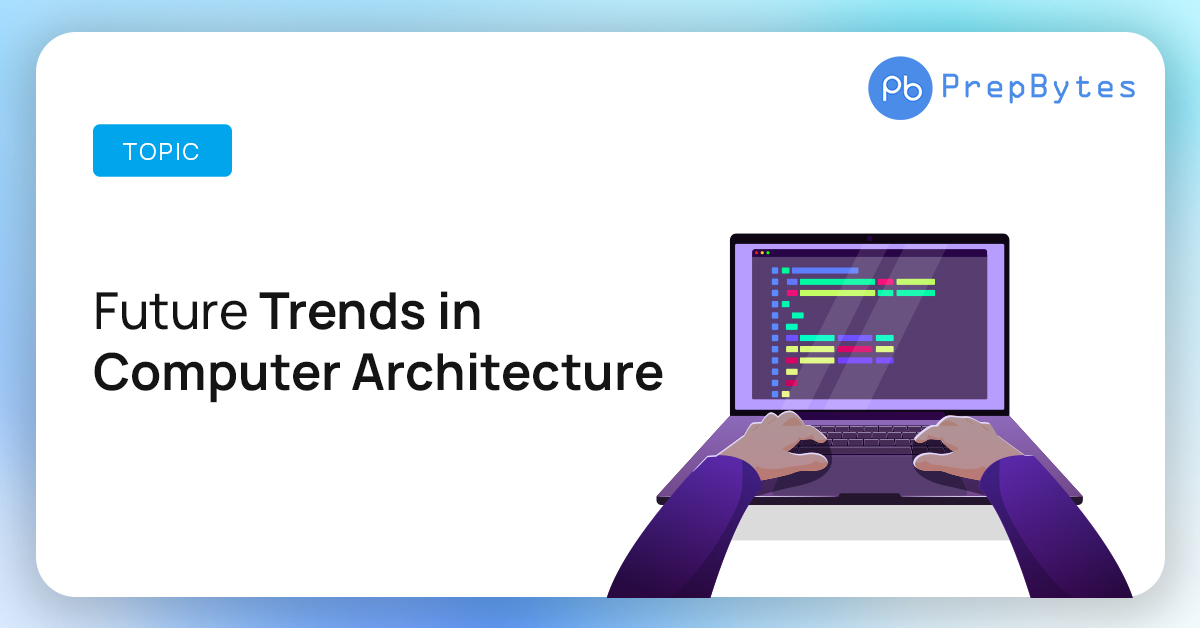
Computer architecture is constantly evolving to meet the demands of modern computing. Future trends in computer architecture focus on improving performance, efficiency, and scalability to support emerging technologies such as artificial intelligence, quantum computing, and internet of things (IoT). This article explores some of the key trends shaping the future of computer architecture and their implications for the computing industry.
The superstructure of modern computing in the fast-moving technological world is based on computer architecture. As we go steadily, a number of revolutionary trends are about to transform computer architecture. This in-depth research examines the upcoming and ground-breaking developments in computer design that will alter the very core of computing.
Future Trends in Technology
There are some Future trends in computer architecture that are:
1. Quantum Computing: Pioneering Unimaginable Potentials
Quantum computing is a leader in the field of computer architecture and is a shining example of unmatched creativity. Quantum computers have the capacity to tackle incredibly complicated problems that are almost impossible for conventional computers by utilising the strange and counterintuitive concepts of quantum physics. This cutting-edge technology has the potential to completely transform industries including material science, encryption, and optimisation, ushering in a new era of computing power.
2. Neuromorphic Architecture: Bridging the Chasm Between Man and Machine
Neuromorphic architecture has the potential to close the gap between biological and artificial intelligence since it is inspired by the human brain’s amazing flexibility and efficiency. This concept aims to build computers capable of learning and processing information in ways like the human mind by mimicking the neural networks that underlie human cognition. In turn, machine learning algorithms will increase significantly, opening the door for previously unimaginable developments in autonomous systems, robotics, and medical diagnostics.
3. In-Memory Computing: Revolutionizing Data-Driven Processes
The introduction of in-memory computing is set to upend the traditional distinction between processor and memory units. This novel method avoids the requirement for data transmission between dissimilar components by executing computations directly within the memory. In-memory computing has the potential to greatly increase the speed and efficiency of data processing, with possible applications ranging from real-time analytics to artificial intelligence.
4. Photonic Computing: Illuminating the Path to Enhanced Performance
Photonic computing comes as a ray of hope when the boundaries of electronic communication are being reached. Incomparable speeds and energy efficiency are promised by photonic computers, which use the characteristics of light to transport and process data. The consequences are significant, affecting a wide range of sectors, including supercomputing and telecommunications, and ushered in a new era of computational power.
5. Reconfigurable Architecture: Adapting to the Winds of Change
Reconfigurable architecture shines as a symbol of adaptation in a society where technology needs fluctuate wildly. This development enables computer systems to instantly optimise performance and energy use by dynamically reconfiguring their hardware to meet the specific requirements of distinct workloads. Reconfigurable architecture responds to the shifting demands of a broad and ever-changing computing ecosystem with applications ranging from edge computing to scientific simulations.
Conclusion
Future trends in computer architecture are driven by the need for improved performance, efficiency, and scalability to support emerging technologies and applications. By embracing AI hardware accelerators, heterogeneous architectures, quantum computing, energy-efficient designs, and photonic interconnects, the computing industry is poised to deliver innovative solutions that meet the demands of the digital age.
Frequently Asked Questions (FAQ) – Future Trends in Computer Architecture
Below are some of the FAQs related to Future Trends in Computer Architecture:
1. What is the role of AI in future computer architecture?
AI is expected to play a significant role in future computer architecture by driving the adoption of specialized hardware accelerators, such as TPUs and neuromorphic chips, to accelerate AI workloads and improve performance.
2. How will heterogeneous architectures impact future computing systems?
Heterogeneous architectures are expected to improve performance and energy efficiency by combining different types of processors, such as CPUs, GPUs, and accelerators, to leverage their strengths for specific tasks.
3. What are the implications of quantum computing for computer architecture?
Quantum computing is expected to revolutionize computer architecture by introducing quantum processors and quantum annealers that can solve complex problems far beyond the capabilities of classical computers.
4. How important is energy efficiency in future computer architecture?
Energy efficiency is a critical consideration in future computer architecture to minimize the environmental impact of computing and reduce operating costs. Future designs are expected to prioritize energy-efficient components and technologies.
5. What are photonic interconnects, and how will they impact future computing systems?
Photonic interconnects use light instead of electricity to transmit data, offering higher bandwidth, lower latency, and reduced power consumption compared to electrical interconnects. They are expected to be integrated into future computer architectures to improve performance and efficiency.


